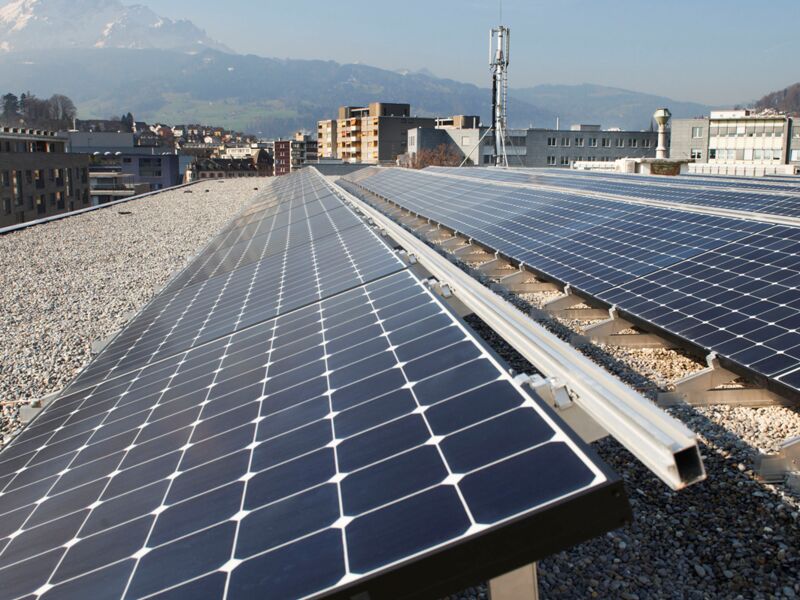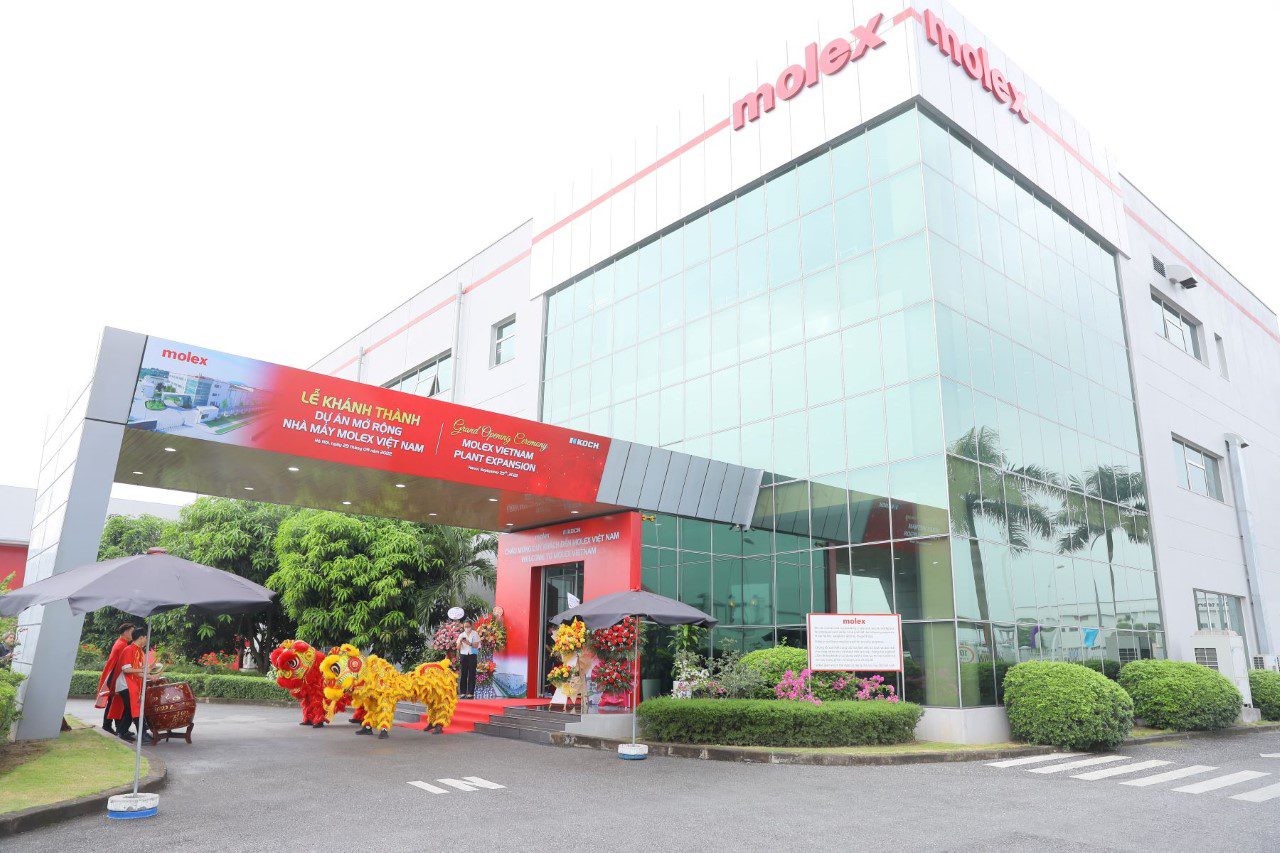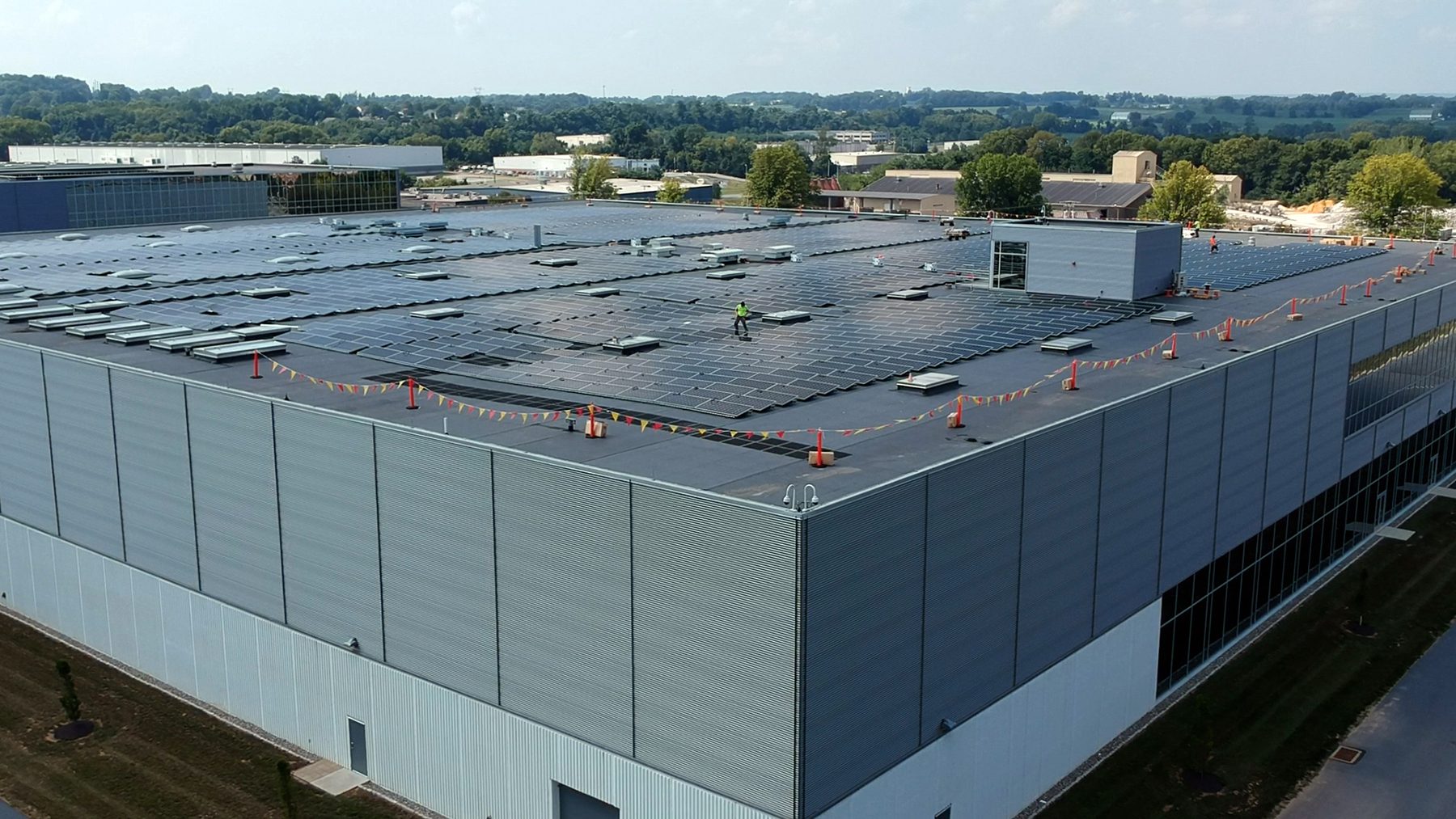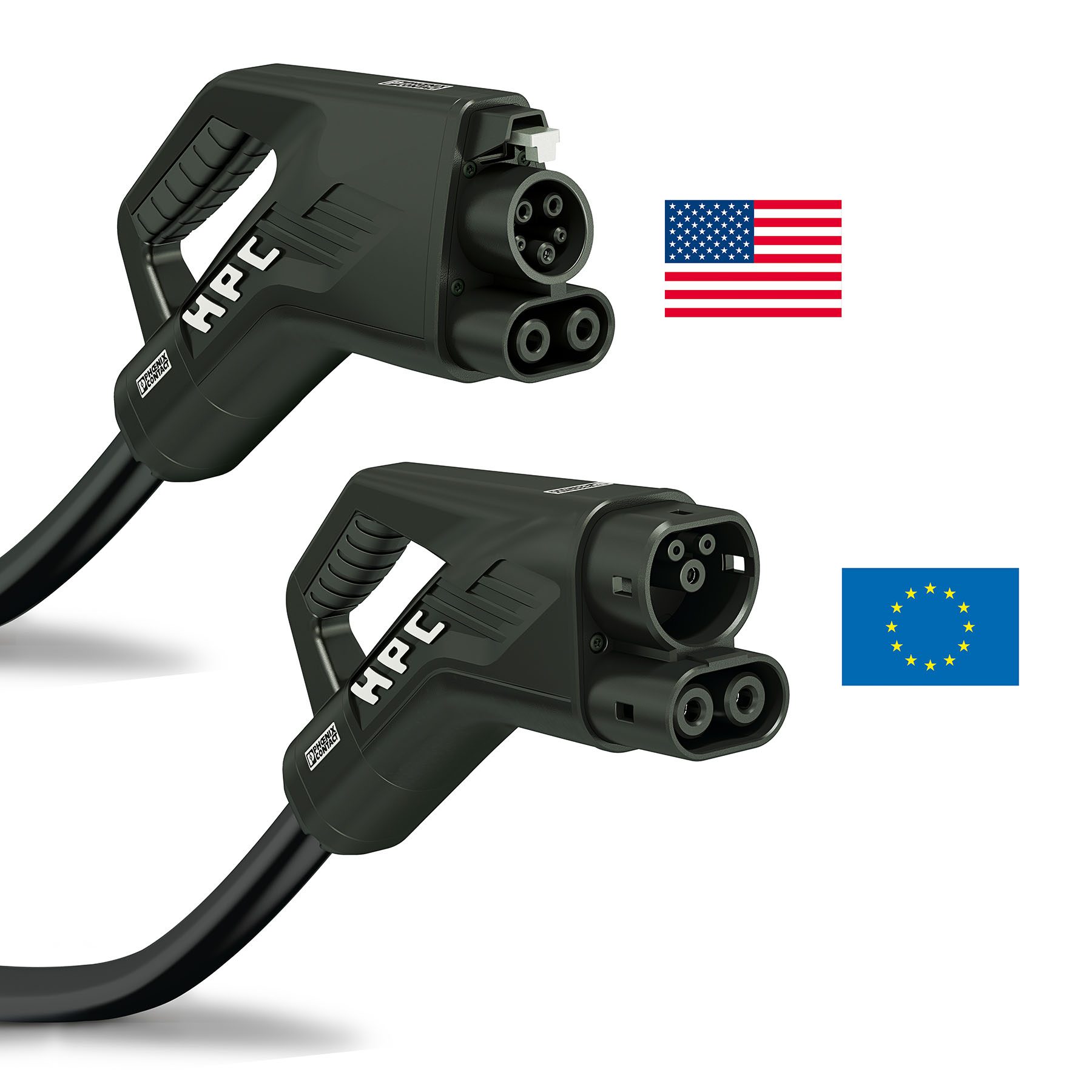Connecting to a Green Future: Connector Suppliers Embrace Sustainability
Along with meeting demands for more capabilities and greater performance, electronics manufacturers are taking steps to conserve resources, protect the environment, and care for their employees and the communities they serve.

The recent TE Connectivity Industrial Technology Index, an online survey of engineers and executives, found that “executives are five times more likely than engineers to feel that focusing on sustainability is unimportant for the organization. And one in five engineers report that their organization doesn’t have a clear strategy for implementing sustainable practices.” Yet, the survey also found that renewable energy is one of the most common priorities for investment over the next one to three years, with 45% of companies prioritizing renewables.
“Customers, employees, and shareholders alike are pushing companies across industries to embrace sustainability, so it’s no surprise to see renewable energy as an area of focus,” Arvind Kaushal, TE’s senior vice president and chief strategy officer, stated in the report. “With continued government policy support and improving competitiveness of wind and solar photovoltaics, renewable generation capacity is expected to grow at 15% CAGR over next 10 years, with 50%+ of the renewables growth coming from solar PV and 30% of the growth coming from onshore and offshore wind.”
Attitudes have shifted
Companies are realizing it is not enough to make changes simply to bolster their reputation; significant, meaningful, and actionable change is required to protect their future.
Ralph Müller, CEO of SCHURTER Holding AG, stated in his company’s 2021 Sustainability Report that, initially, reporting on resource consumption was done as a requirement. “I’d argue that if a company shuts itself off to the topics that are also reflected in the Sustainable Development Goals (SDGs), it would sooner or later lose its reason for existence. There has been a shift in attitudes in society. For everyone, it is clear that something has changed. Whether that’s in nature, consumption, the processing of crude oil, waste, or recycling.”
HARTING has focused on a big push for carbon-neutral manufacturing, with a goal of 100% climate neutrality in its locations by 2030. From 2011 to 2022, its corporate carbon footprint in Germany has been reduced by 92%, representing an annual savings of about 17,700 metric tons of CO2. HARTING’s stated 2030 environmental goals also include a 50% reduction of directly influenced emissions from upstream and downstream processes (basis FY21; absolute target FY31 emissions < 3,8 Mio kg CO2eq). In addition, policies are in place to reduce, substitute, and eliminate hazardous substances; to increase the recyclability and optimal recycling content of its products; and to completely accept the return of its products and packaging at the end of life.
Phoenix Contact has developed its vision for an all-electric society that sets out to achieve the seemingly incompatible goals of economic prosperity and sustainability. With an emphasis on solar, smart solutions, renewables, and e-mobility, the company acknowledges the ultimate, if ambitious, goal of meeting “the world’s energy needs completely and economically from renewable sources in a sustainable manner.” In Phoenix Contact’s All Electric Society, sustainably generated electricity is essentially the “primary energy source” and is also used as the basis for production of synthetic fuels (e-fuels) through power-to-gas and power-to-liquid technologies. To do this efficiently and cost-effectively, Phoenix Contact promotes sector coupling, with “comprehensive electrification, digitalization, and automation of all areas, such as energy, infrastructure, buildings, mobility, and industry to create ‘smart sectors.’”
In late 2022, Carlisle Companies Incorporated, the umbrella company of Carlisle Interconnect Technologies, announced its commitment to achieve net-zero greenhouse gas emissions by 2050. Carlisle proposed near-term greenhouse gas reduction targets, through the Science Based Targets Initiative (SBTi), as the first step to setting a long-term net-zero target with SBTi.
Sustainability is a cornerstone of new and expanded facilities
At the ribbon cutting of HARTING’s expanded manufacturing facility in Mexico, Chairman of the Board Philip Harting said, “The facility was designed to reduce our carbon footprint and CO2 emissions. [It] meets state-of-the-art standards and is fully geared for energy efficiency.” Similarly, HARTING’s new production facility in Chennai, India, is built for efficient processes operating at the fullest possible capacity. Andreas Conrad, management board member responsible for operations in the HARTING technology group, added that the reduction of the company’s carbon footprint was “squarely front and center.”
SCHURTER has made significant investments to modernize its production facilities around the world, improving energy efficiency and reducing waste. LED smart lighting, underfloor heating, contamination filtering systems, and rooftop solar installations (shown above) at its Lucerne, China, Hungary, India, and California facilities have helped the company reduce its energy use and costs while moving it towards a goal of 75% of its energy use coming from renewable sources by 2035.

As part of its environmental stewardship initiatives, Molex’s expanded manufacturing operations in Hanoi feature an on-site solar installation that supports the site’s energy needs and reduces greenhouse gas emissions.
On Earth Day in 2022, Phoenix Contact unveiled the rooftop solar system at its U.S. headquarters. The nearly 1-megawatt array will produce 30% of the facility’s energy. “We estimate this solar power installation will reduce our electricity costs by approximately $150,000 per year. While a smart business choice for us, reducing our company’s carbon footprint is more important in the long term,” said Jack Nehlig, president of Phoenix Contact USA. Phoenix Contact designed and installed the monitoring portion of the system, which features numerous Phoenix Contact products. In 2014, Phoenix Contact installed a 1-megawatt combined cooling heating and power (CCHP) facility that provides 65% of the location’s energy and saves the company more than $300,000 annually. With the CCHP and the solar array, Phoenix Contact will generate enough energy to go off the grid on sunny spring and fall days.

The solar array installed at Phoenix Contact’s U.S. headquarters saves approximately $150,000 per year.
Products that reflect sustainability goals
“Product innovation is no longer possible without sustainability considerations,” said Müller. SCHURTER’s Sustainability Report roadmap in part addresses how SCHURTER’s products are used. Design and services are constantly improved to minimize the company’s ecological footprint. The switch to renewable material sources advances the circular material flow.
“The first product we developed that goes in this direction is the Smart Connector, which can measure and optimize energy consumption and the useful life of devices, for instance,” said Thomas Schurter, chairman of the SCHURTER Holding AG board of directors. Green plastics is another area in which SCHURTER is taking the lead. In light of the high cost of non-renewable plastic, Schurter believes this is the perfect opportunity to bring green plastic to the market.
SCHURTER provides product information on substances, compliance with guidelines and regulations (RoHS, China RoHS, and REACH, for example) as well as ecological details with over 800 product content sheets online. The company is also working toward eliminating materials such as lead and chlorine from its products and qualifying environmentally friendly materials for use.
Phoenix Contact has a number of products that are advancing sustainable infrastructure, mobility, energy, building, and industry. One example: smart street lighting adjusts its intensity in response to changing weather, lighting conditions, and road use. The lights form an extensive network that can evaluate weather, traffic, and environmental data, for greater safety, comfort, and efficiency on smart transportation routes — with significantly less energy consumption.

The CHARX connect DC charging cables from Phoenix Contact are used for fast DC electric vehicle charging. Charging powers of up to 500 kW are achieved with the aid of cooled High Power Charging connectors. This allows vehicle batteries to be charged at an HPC charging station within a matter of minutes to quickly top up the travel range.
With TE products in electric vehicles, renewable energy products, and more efficient data centers, the company is focused on reducing greenhouse gas emissions, water, and waste, said Holly Webdale, vice president, environmental sustainability, global facilities, and construction. Kaushal added, “We are enabling this transition to renewables with innovative solutions that make it simpler and faster to connect renewables and reduce total cost of ownership.”
Attracting employees, partners, and customers
Employees today want to make a difference and they look for employers who take sustainability seriously. This subject is especially important to young employees and, therefore, must “be taken into account for future talent acquisition,” stated Schurter. “For young people, it is very important to see that a company values the conservation of nature and resources … Companies that focus on sustainable issues today will also attract those employees who develop sustainable products for the future.” Schurter also noted that more and more business partners and customers ask for evidence of what the company does in terms of sustainability.
To learn more about the companies mentioned in this article, visit the Preferred Supplier pages for Carlisle Interconnect Technologies, HARTING, Molex, Phoenix Contact, SCHURTER, and TE Connectivity.
Like this article? Check out our other manufacturing and alternative energy articles, our Industrial Market Page, and our 2023 and 2022 Article Archives.
Subscribe to our weekly e-newsletters, follow us on LinkedIn, Twitter, and Facebook, and check out our eBook archives for more applicable, expert-informed connectivity content.
- Mezzanine Connectors Product Roundup - April 16, 2024
- Out Now! New eBook Shares Bright Ideas for Electrification - April 16, 2024
- What are ARINC 801 Connectors? - April 9, 2024





